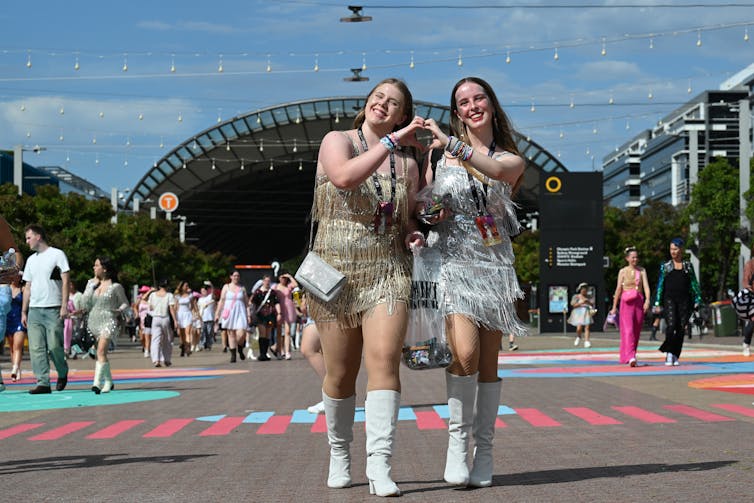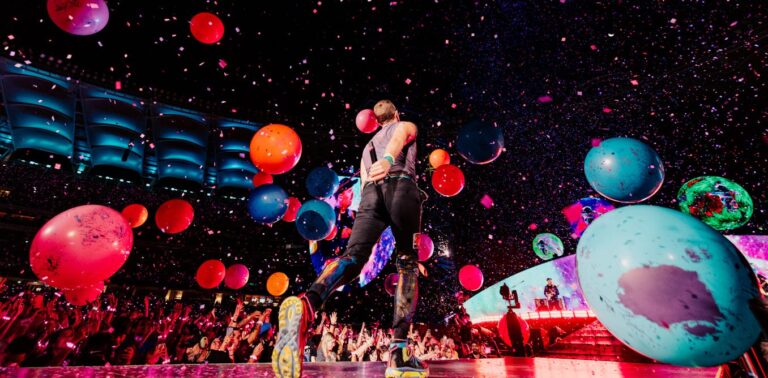The Guardian Australia reported last week that the Western Australian state government has provided an A$8 million subsidy for two exclusive Coldplay concerts in 2023.
Their show at Perth’s Optus Stadium in November was described as a “major tourism success” for the Western Australian government.
The state’s “return on investment” will undoubtedly be reported by one of the Big Four accounting firms and will inevitably cite ticket purchases, lodging and hospitality spending, etc.
Whether you believe these reports or not, these metrics do not measure the true cost-effectiveness of large-scale cultural initiatives.
The return on government investment in the arts and events should be measured over a decade, not a month, and should include the range of less quantifiable social and cultural benefits that take time and understanding to realise.
Picking a Winner
The subsidy for the concert, organised by US-based multinational promoter Live Nation Entertainment, reflects a wider trend of providing large amounts of public funding to highly successful commercial enterprises led by state governments.
South Australia is pursuing a similar strategy, with the state’s tourism board investing in Harvest Rock Festival, which has been criticised for lacking a local act among its lineup.

British band Jamiroquai will headline Adelaide’s Harvest Rock Festival in 2023. Photo by Amy Harris/InVision/AP
Live Nation is being pursued by the US Department of Justice for anti-competitive practices, raising questions about the propriety and value of providing such an organisation with large amounts of public funding.
The government argues that such events inject “tourist spending” into local economies, justifying subsidies from increased tourism.
It’s a quick win, but there is a strong argument to be made that using cultural events as a short-term “sugar-guzzler” economic stimulus erodes the capacity of local arts communities.
Revenues from audience members are used for hospitality and accommodation, rather than going to local artists, venues and producers who nurture and develop grassroots talent.
Featured talent is most often imported from overseas, and while these events provide temporary employment for local industry workers, such as crew and event staff, the lack of long-term investment in the sector adds to the precarity of these workers.
Meanwhile, many small live music venues have closed, putting grassroots festivals and events at risk.
When music funding comes from the tourism budget rather than the arts budget, it may increase spending on hospitality in the short term, but this often comes at the expense of the long-term health of the local sector. These events are often funded as one-off events produced by overseas companies and featuring primarily imported talent, undermining the capacity of the local sector.
Bread and Circuses
Festivals have long been a vehicle for promoting cultural tourism, but they require investment in organisational capacity and retaining local talent, creatives and support workers.
Spending on arts and culture is often subject to intense scrutiny, but tourism spending is relatively unrestricted and justified by opaque cost-benefit analyses.
There is a compelling argument that strong public support for the events industry was needed to reinvigorate its atrophied industry in the wake of the pandemic, but as Taylor Swift’s recent tour shows, this is becoming increasingly hard to justify now that international music tourism is coming back with a vengeance.
As the live music market trends towards further consolidation and monopolistic behaviour, there should be greater scrutiny of the form that government spends on major music events.
Public funding for cultural events needs to go beyond funding the hospitality industry and aim to invest in the long-term capacity of the local sector.
Who could miss it?
The rise of the ‘visitor economy’ raises serious concerns about the objectives of arts and cultural policy.
Live music will generate revenue from consumer spending on imported cultural goods, rather than expected revenue for local industry.
Greg Jericho, chief economist at the Australia Institute, estimates that Swift’s recent Australian tour cost $55 million. But, he writes:
There’ll be very little left in Australia. There’s a reason this world tour could make Swift a millionaire.
Swift’s tour was an entirely commercial event, but it’s another matter that state governments are trying to replicate the effect by handing millions of dollars to multinational conglomerates.
Subsidies to international artists and festivals could provide short-term relief to the tourism, hospitality and accommodation sectors, leading to an increase in “tourist spend”.

Taylor Swift’s Australian tour is estimated to have cost $55 million. AAP Image/Dean Lewins
However, this is not a very public-spirited thing to do, nor is it in the long-term interests of the Australian music industry.
Local music was once at the heart of Australian popular culture and inseparable from the country’s self-confidence and identity, but today it is in a dire state.
Australia’s music industry needs investment in small and medium-sized venues, an entirely new approach to regulating global tech platforms such as Spotify, and a rethinking of the role of public radio for a new era.
Ultimately, spending millions of dollars to import mainstream British artists at a time when Australian music is in decline is counterproductive.

